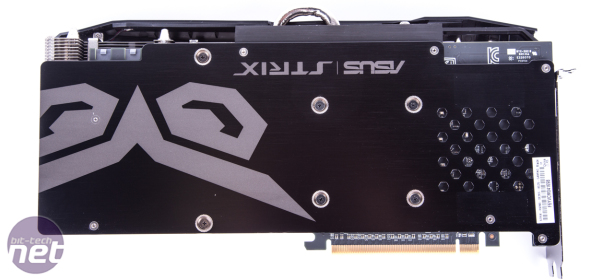Asus Radeon R9 390 Strix OC 8GB Review
Manufacturer: AsusUK price (as reviewed): Approx. £300 (inc VAT)
US price (as reviewed): MSRP $360 (ex Tax)
AMD's Radeon R9 390 GPU was pushed out into the marketplace to succeed the R9 290 but, for the most part, the newer model is physically similar to its predecessor. Both GPUs share the same 28nm GCN-based design with 2,560 shaders but the R9 390 is based on revised silicon with microcode enhancements and ships, as standard, with twice the amount of GDDR5 video memory; 8GB versus 4GB. AMD has also mandated faster clock speeds on the memory and core to deliver better out-of-the-box performance but with overclocking the differences between the two are negligible;, all R9 290 and 390 GPUs top-out with a similar maximum frequency.
AMD has relied on its partners, such as Asus, to come out with new and innovative designs that will breathe life back into the two year-old Hawaii (now Grenada) silicon. Asus has risen to the challenge by rolling out its newest DirectCU III package to the AMD Radeon R9 390, as well as the R9 390X and R9 Fury. The DC3 solution introduces a new triple-fan cooler making use of industry-leading 10mm heatpipes, but the most interesting addition is the AutoExtreme manufacturing technology.
Asus AutoExtreme is an entirely automated PCB assembly process which dramatically increases the quality of the final assembled graphics card. Machine-assembly reduces the chance of human error, improving long-term reliability, and the AutoExtreme process is able to entirely remove the usage of flux preventing sharp edges and long-term oxidation-related wear.
In relation to other new Asus graphics cards the R9 390 variant is almost indistinguishable from the GTX 980 Ti that we recently reviewed. The primary difference, aside from the different GPU, is the slightly smaller PCB. Fundamentally, the rest of the design is still aesthetically similar with a red, silver and black triple-fan cooling solution which aligns to a dual-slot form factor.

Around the rear of the Asus R9 390 Strix is a dark-black backplate featuring the Strix logo, Asus hasn't equipped the GPU Fortifier support bracket found on the GTX 980 Ti variant, presumably because the smaller PCB size means the R9 390 model is less likely to bend. The height of the cooling solution is still notably higher than the PCI bracket and at 12 inches in length prospective buyers with small form factor cases will need to be vigilant of compatibility issues.

The GPU is overclocked by 5 percent to 1,050MHz out of the box, with a 1,070MHz OC Mode also available for use. The GDDR5 memory, however, has been left at 6GHz effective.
Display connectivity is fairly standard for a graphics card of this calibre - three DisplayPort 1.2, a single DVI and HDMI 1.4a. The omission of HDMI 2.0 support is a limitation of the AMD GPU rather than a design "blunder" on behalf of Asus.

Specifications
- Graphics processor AMD Radeon R9 390, 1,050MHz (Gaming Mode) 1,070MHz (OC Mode)
- Pipeline 2,560 stream processors, 160 texture units, 64 ROPs
- Memory 8GB GDDR5, 6GHz effective
- Bandwidth 384GB/sec, 512-bit interface
- Compatibility DirectX 12, OpenGL 4.4
- Outputs/Inputs 3 x DisplayPort 1.2, Dual Link DVI-I, HDMI 1.4a
- Power connections 1 x 8-pin, 1 x 6-pin PCI-E, top-mounted
- Size 300mm long, dual-slot
- Warranty Three years

MSI MPG Velox 100R Chassis Review
October 14 2021 | 15:04









Want to comment? Please log in.